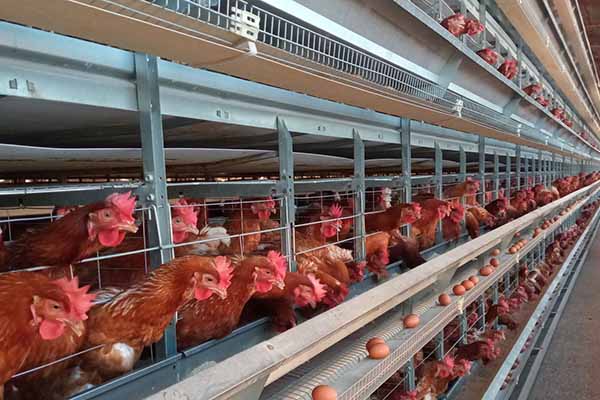Uganda Chicken Farm Automation: The Cost of Equipment Maintenance
Time : 2025-04-28
In the bustling country of Uganda, where agriculture is the backbone of the economy, chicken farming has been thriving. With the increasing demand for eggs and chicken meat, many farmers are investing in automation equipment to streamline their operations. However, one crucial aspect often overlooked is the cost of maintenance for these high-tech machines. In this article, we’ll delve into the nitty-gritty of Uganda chicken farm automation, focusing on the costs associated with equipment maintenance. So, let’s get down to business!
Introduction to Uganda Chicken Farm Automation
Automation has revolutionized the chicken farming industry, making it more efficient and productive. In Uganda, farmers are increasingly turning to automated systems to manage various aspects of their operations, such as feeding, cleaning, and monitoring the health of their flocks. These systems are not only time-saving but also improve the overall quality of the produce.
The Importance of Maintenance
While automation has brought numerous benefits to the chicken farming sector, it’s important to remember that these systems require regular maintenance to function optimally. Neglecting maintenance can lead to costly repairs, decreased productivity, and even the failure of the equipment. In this article, we’ll explore the factors that influence the maintenance costs of automation equipment in Uganda’s chicken farms.
Factors Influencing Maintenance Costs
1. Quality of Equipment: High-quality automation equipment tends to be more durable and less prone to breakdowns. However, it also comes with a higher initial cost. On the other hand, low-quality equipment might be cheaper upfront but could incur higher maintenance costs in the long run.
2. Type of Equipment: Different types of automation equipment have varying maintenance requirements. For instance, a feeding system might require frequent cleaning and lubrication, while a monitoring system could need software updates.
3. Usage Frequency: The frequency with which the equipment is used can significantly impact maintenance costs. High-use systems may require more frequent maintenance and repairs than low-use systems.
4. Location: The geographic location of the chicken farm can also affect maintenance costs. For instance, farms located in remote areas might face higher costs for parts and labor due to transportation challenges.
Estimating Maintenance Costs
To better understand the costs involved, let’s consider a few examples of common automation equipment used in Uganda’s chicken farms:
1. Feeding System: A high-quality feeding system, such as an automated feeding machine, could cost between $5,000 and $10,000. Maintenance costs for this system are likely to be around $500 to $1,000 per year, including parts, labor, and routine service.
2. Cleaning Equipment: An automated chicken coop cleaning system, which can cost anywhere from $3,000 to $5,000, might require maintenance costs of $300 to $500 per year.
3. Monitoring System: A state-of-the-art monitoring system, priced at $2,000 to $4,000, could have annual maintenance costs ranging from $400 to $600.
Tips for Reducing Maintenance Costs
1. Regular Maintenance: Invest in a preventive maintenance program that includes routine checks, cleaning, and lubrication. This can help identify and address issues before they become more significant problems.
2. Training: Ensure that your staff is adequately trained to operate and maintain the automation equipment. Proper training can help minimize the risk of operator errors and reduce the need for repairs.
3. Choosing the Right Equipment: When investing in automation equipment, consider the long-term maintenance costs. Opt for reliable, high-quality products that offer a good balance between cost and performance.
4. Vendor Support: Work with vendors that offer comprehensive support, including warranty, parts availability, and technical assistance. This can help you manage unexpected repairs and reduce downtime.
Conclusion
In conclusion, the cost of maintenance for automation equipment in Uganda’s chicken farms is a significant factor to consider when investing in these high-tech systems. By understanding the factors influencing maintenance costs and adopting strategies to reduce them, farmers can ensure that their investments pay off in the long run. With proper care and maintenance, automation can bring substantial benefits to your chicken farming business.












